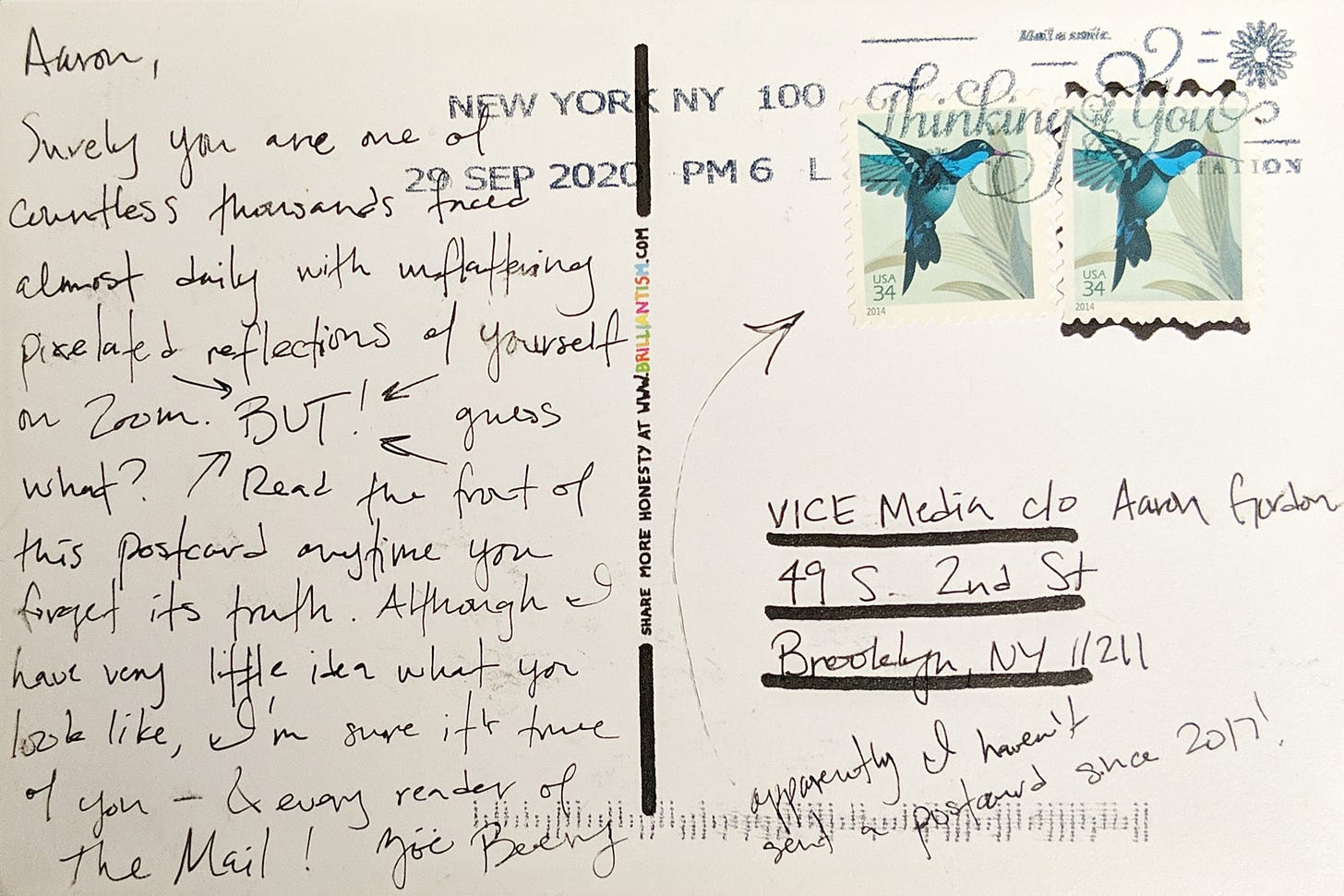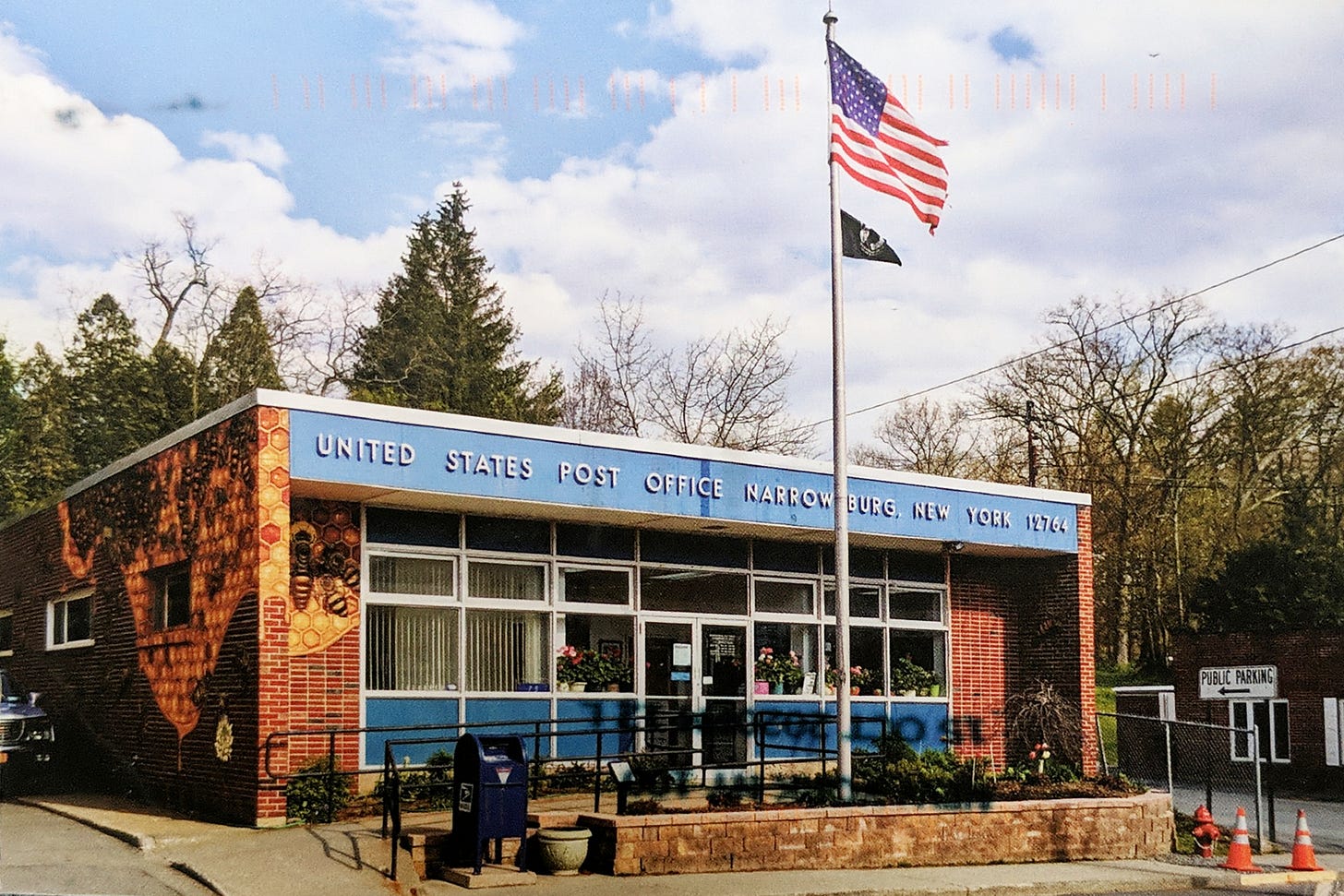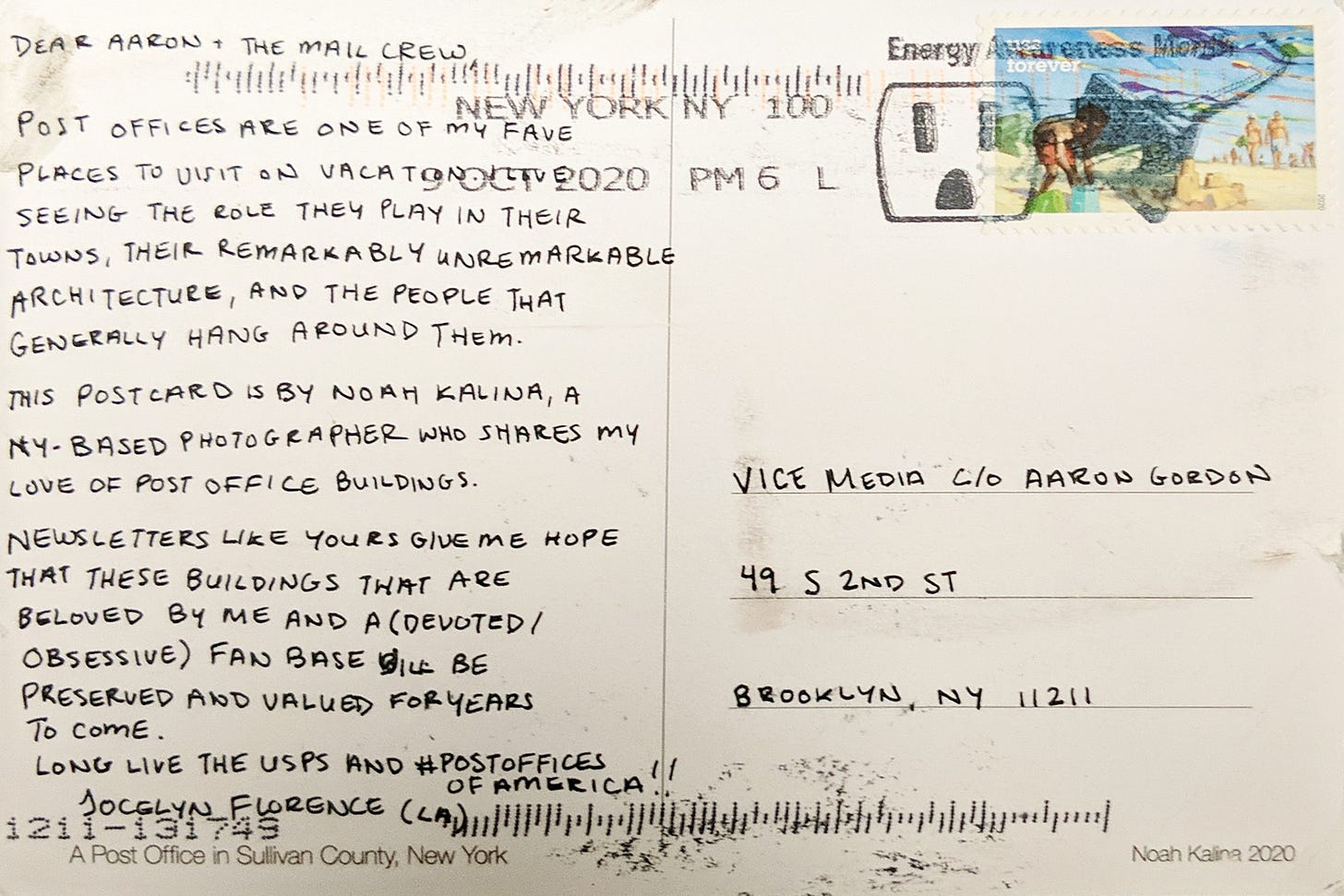Crunch Time
Hi everyone, exciting news: Our second zine has been printed and is currently on the way to us, and will be mailed out to subscribers later this week or early next week. This month's edition is about a topic that has always been near and dear to our hearts: Hacking. Since most of our hacking coverage is about things that happen online, we thought it'd be cool to have a snapshot of where hacking culture is, in a printed zine. The issue features stories by Motherboard staff and this incredible cover art by Rebekka Dunlap:

Anyone who subscribes now will also get a copy of our first zine. There are also a few people who have subscribed since we sent out the first zine—we will ship you both zines at the same time.
If you want to get in on the first batch, please subscribe by Friday.
We are now a week from Election Day (somehow!) and mail service in many parts of the country still sucks. Two areas in particular where mail service sucks are Philadelphia and Detroit, Democratic strongholds in key swing states. The Washington Post published an article focusing on mail problems in those two cities as well as other swing states, although the article also made clear they're hardly the only areas experiencing delays.
Mail delays are persisting despite the USPS's carefully worded promises to stop doing some—but not all—of the stuff that made people angry over the summer, at least until the election is over. For example, they stopped dismantling sorting machines but didn't promise to put any back in service (a few recent media reports claimed a federal judge ordered them to put the machines back together; the order merely stated the USPS must do so if it could no longer accommodate election mail which the USPS has long maintained won't be an issue). They said they would not ban late or extra truck trips or overtime but also insisted they never did that in the first place, even though they obviously curtailed them significantly. And the USPS never in fact fully resumed late or extra trips, which still lag far behind pre-DeJoy levels along with overall service. In sum, delays are persisting despite court orders that mandate USPS management knock it off (to use a technical legal term).
Why does mail service still lag its pre-DeJoy levels? And does it matter for tallying votes?
We live in a country in which all votes matter but some votes matter more than others. If you live in a swing state, the marginal value of your vote in the presidential election is a lot higher than mine is in New York. Similarly, mail delays in some parts of the country could have a much greater significance than in others.
Using performance data released by the USPS as part of one of the court cases, I tried to create one chart that summarizes first class mail delivery performance since the beginning of the year. It's a little messy since it's broken down by the USPS's 67 service districts, but I think it tells an important story. Below is a screenshot of the chart, but you can play around with an interactive version of it here (the big swooping outlier that runs off the chart in April is the New York district).

Every chart tells a story, sometimes misleadingly so. But the one this chart is telling me accords with all of the reporting I and many others have done on the USPS so far. So I think it's worth listening to.
The story goes like this: In 2020, two events destabilized USPS performance in different ways. The first was the pandemic, which began in mid-March in certain parts of the country and, in case you haven't noticed, is still going. It destabilized service in specific places at specific times. While this could impact delivery rates elsewhere if it caused key sorting facilities to be short-staffed, in general the impacts were relatively localized. To tell this story in terms of the way the graph looks, it caused some districts to get detached from the big clump of lines that represents the pre-2020 status quo. But the status quo clump didn't change much if at all.
Then, in July, the clump undergoes a "W" pattern, where service tanks, briefly rebounds a bit, tanks again, then rises once more to almost-but-not-quite reach the status quo levels again. This second destabilizing event coincides with Postmaster General Louis DeJoy's sudden policy shifts as well as the peak of coronavirus case counts over the summer.
However, I think it's pretty clear this "W" pattern was the result of DeJoy's changes, not coronavirus cases as the USPS continues to argue. We saw throughout the previous months how coronavirus affects mail service, and this looks altogether different.
When coronavirus delays mail service, some districts fall off the clump as case counts rise in that area. That's not what we see in July. Instead, we see a sudden, simultaneous drop-off across the entire postal network. Districts didn't fall off the clump. The clump went into freefall.
What happened afterwards is the most important lesson for today: the clump stopped being quite so clumpy, meaning service performance became more erratic and with a higher variance between districts. You can tell this by comparing the density of the lines in January to that of September. In January, the clump ranged from 85 percent to 95 percent, or a 10-point variance. By September, the clump is spread out from a high of just over 90 percent all the way down to about 70 percent, or a 20-point variance.
In total, the story of this chart is one of an organization losing control. Not just in swing states, but everywhere. Even non-swing states like Alabama and Mississippi are struggling with mail service, ranking towards the bottom of first-class mail delivery.
Which brings us back to the second of the two questions I asked at the top of this newsletter: does the USPS service tanking matter for counting votes? The best answer I can give right now is: probably, but we don't yet know how much.
First, we simply don't know how many people are waiting to mail ballots until the last minute. According to the U.S. Elections Project, there were 47 million mail-in ballots still waiting to be returned as of Sunday. Some of them will be mailed back in the last week. A smaller number of them will probably be mailed back on November 1 or 2. But many likely won't be mailed back at all, with voters either opting to cast their ballot in person on Election Day, during early voting if available, or not at all. Plus, a few states have changed postmarking and ballot delivery deadlines to add some buffer time for sluggish mail service, so even if a ballot is mailed back on, say, November 2, it might be counted in one state but not the other, even if they are both delivered on November 4.
Second, it's not clear whether the overall first-class mail statistics accurately reflect how ballots specifically are handled (which are only about two percent of overall first class mail during these election weeks). The USPS has pledged to make all possible resources and alternatives available to expedite ballot delivery, particularly in the final week before Election Day. How much will they actually do, and to what extent will it move ballots faster and more reliably? This is all yet to be seen.
Third, the distinction between being on time and being two days late has a huge difference in service delivery. According to the USPS, for the week of October 10 to October 16, 97.25 percent of first-class mail was delivered either on time or less than two days late. That's within a percentage point of its performance in January.
So a randomly selected voter within the U.S. would have roughly the same expectation a ballot mailed by Thursday will reach their election official by the end of Election Day with the similar confidence as before the pandemic. But, on aggregate, a one percentage point dip across tens of millions of ballots could mean hundreds of thousands of ballots not getting delivered in time. That could make a huge difference if these delayed ballots are concentrated in just a few key areas like Detroit and Philadelphia. It could also make little difference if they're spread out across the entire country roughly in proportion to the service performance lines we saw above. And, of course, smaller numbers of ballots make bigger differences in outcomes the further down the ballot you go. How much of a difference the USPS will make is one of those things you can only really know by doing the math after the votes are tallied. But I think we can all agree it would be better for democracy if the USPS was functioning like it did in early June.
This Week in Mail
I just sent links on Thursday and not that much has happened since then. Here’s a cool story about India’s postal network. Which reminds me, I’ve gotten a few questions about how postal services work in other parts of the world, how they have handled the internet transition, etc. I will have more to say on this but for now please read this excellent London Review of Books article from 2011.
Postcards




Wash hands
Wear masks
Write letters
Aaron

